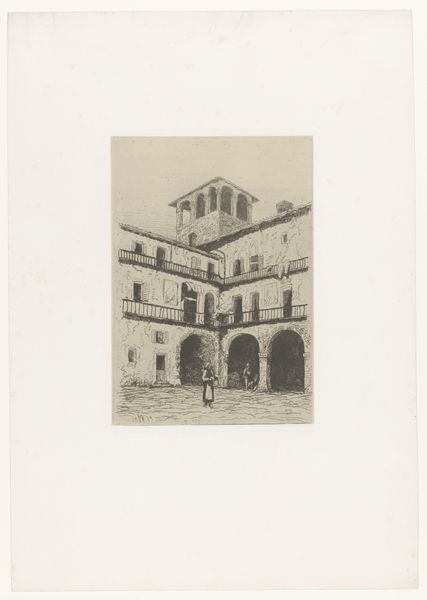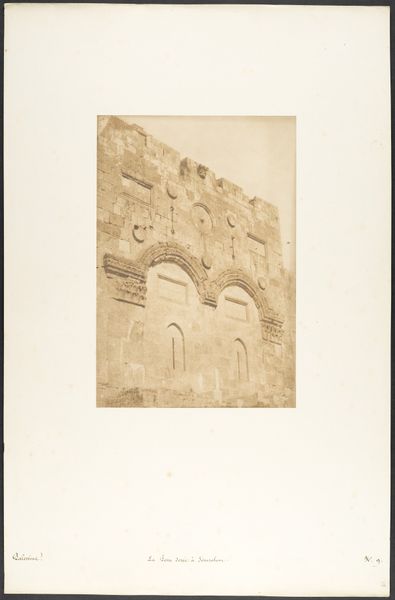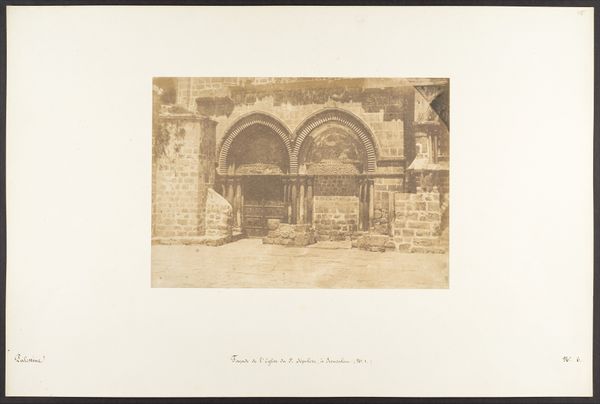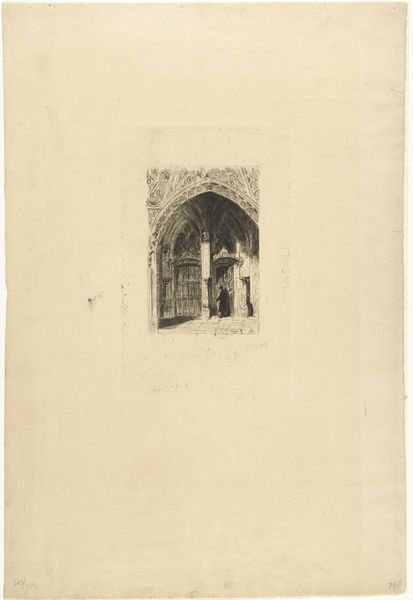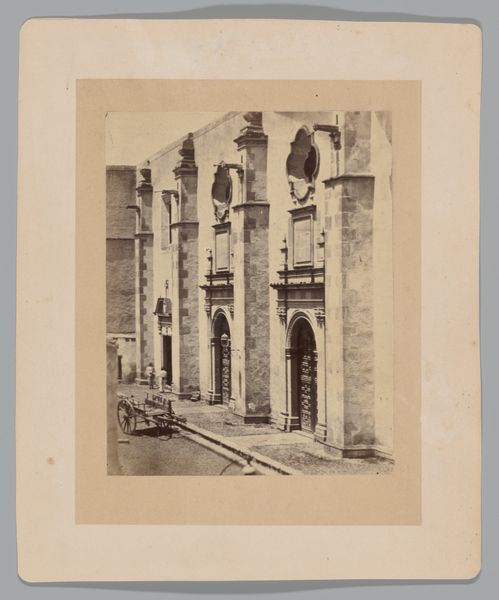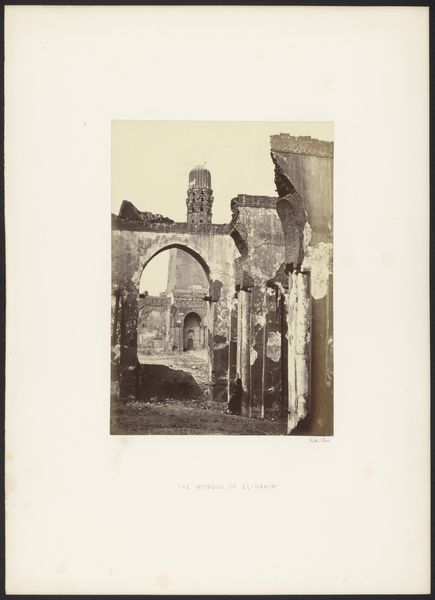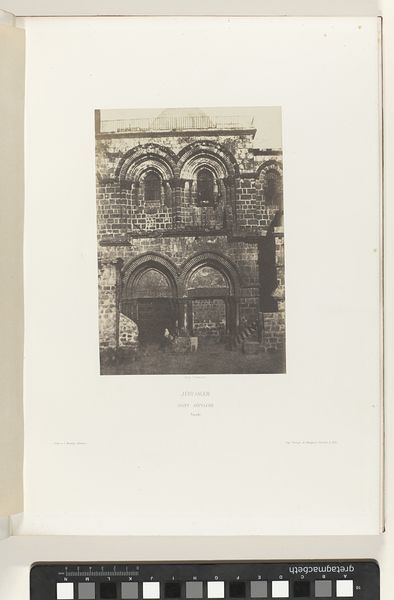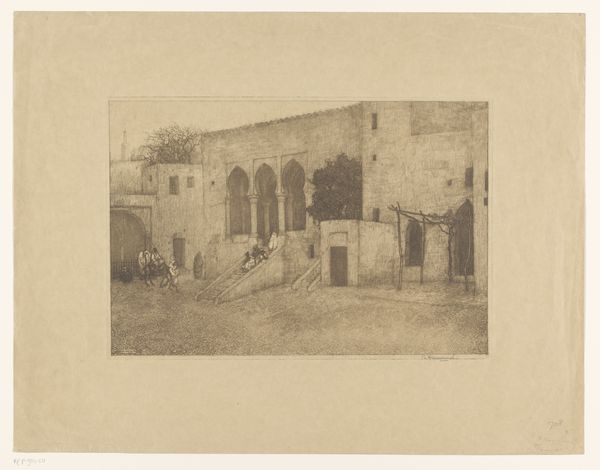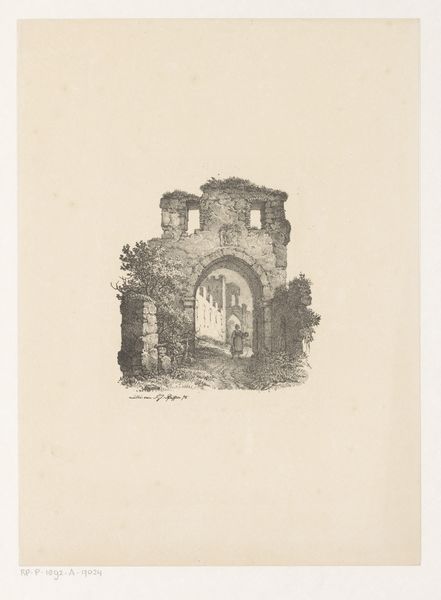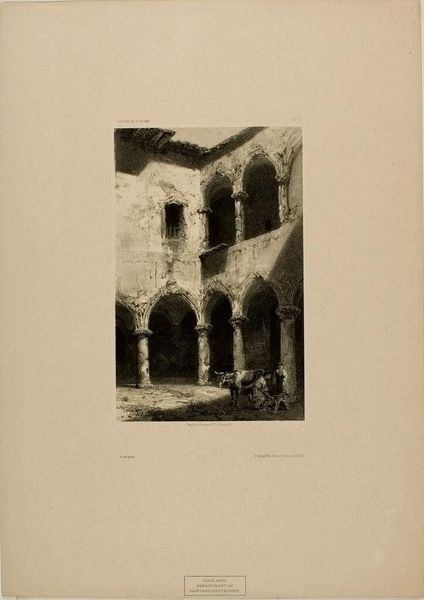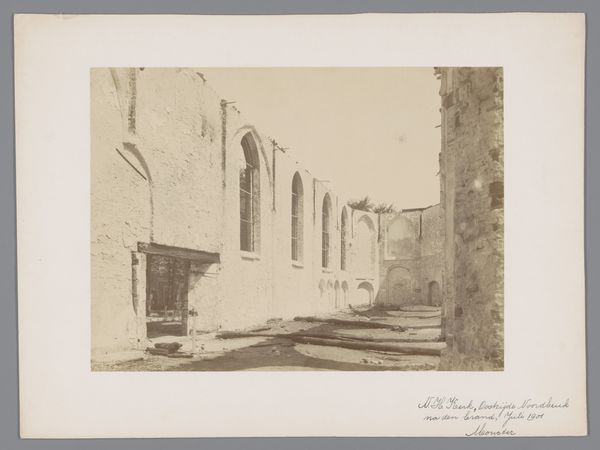
Dimensions: height 558 mm, width 391 mm
Copyright: Rijks Museum: Open Domain
Curator: This is Alexandre Calame's etching, "Two Figures with a Donkey in a Courtyard," created between 1852 and 1855. Editor: The high contrast between the shadows and sunlight really emphasizes the building’s decay, creating a sense of melancholy or maybe just a deep acceptance. Curator: The architecture—those arches and columns—speaks of permanence and established structures, yet is softened somehow. Editor: Absolutely. The architecture provides this grand backdrop, almost like a stage set for the ordinary lives playing out. Look how the figures seem dwarfed by their environment. Are they romanticizing peasant life or highlighting economic disparity by portraying people in an almost theatrical state of dispossession? Curator: Consider how donkeys, historically, represent humility, patience, even stubbornness. They often carried symbolic burdens—literal and metaphorical—for communities. The pairing with the human figures seems to emphasize themes of labour and perhaps endurance. Editor: Yes, and donkeys have been historically used and abused—this composition feels pointed. What power dynamics are on display within this print, beyond the superficial tranquil pastoral image? We might also ask, who would the viewers of such images be and what did they think of them? Curator: Etchings, due to the acid-based process and materials like metal plates, connect to a historical alchemy. An ordinary scene transformed, even elevated, through symbolic artistic processes and mediums, gaining enduring power and cultural impact in its monochrome replication. Editor: You’re right, and that replication raises questions of accessibility, and to whom such representations appealed and why. It's this strange dance between capturing lived experiences and turning it into consumable imagery that holds my attention here. Thank you for helping me consider Calame's choices more deeply. Curator: And thank you for reminding me of the continuing relevancy in observing visual tradition within this work.
Comments
No comments
Be the first to comment and join the conversation on the ultimate creative platform.

